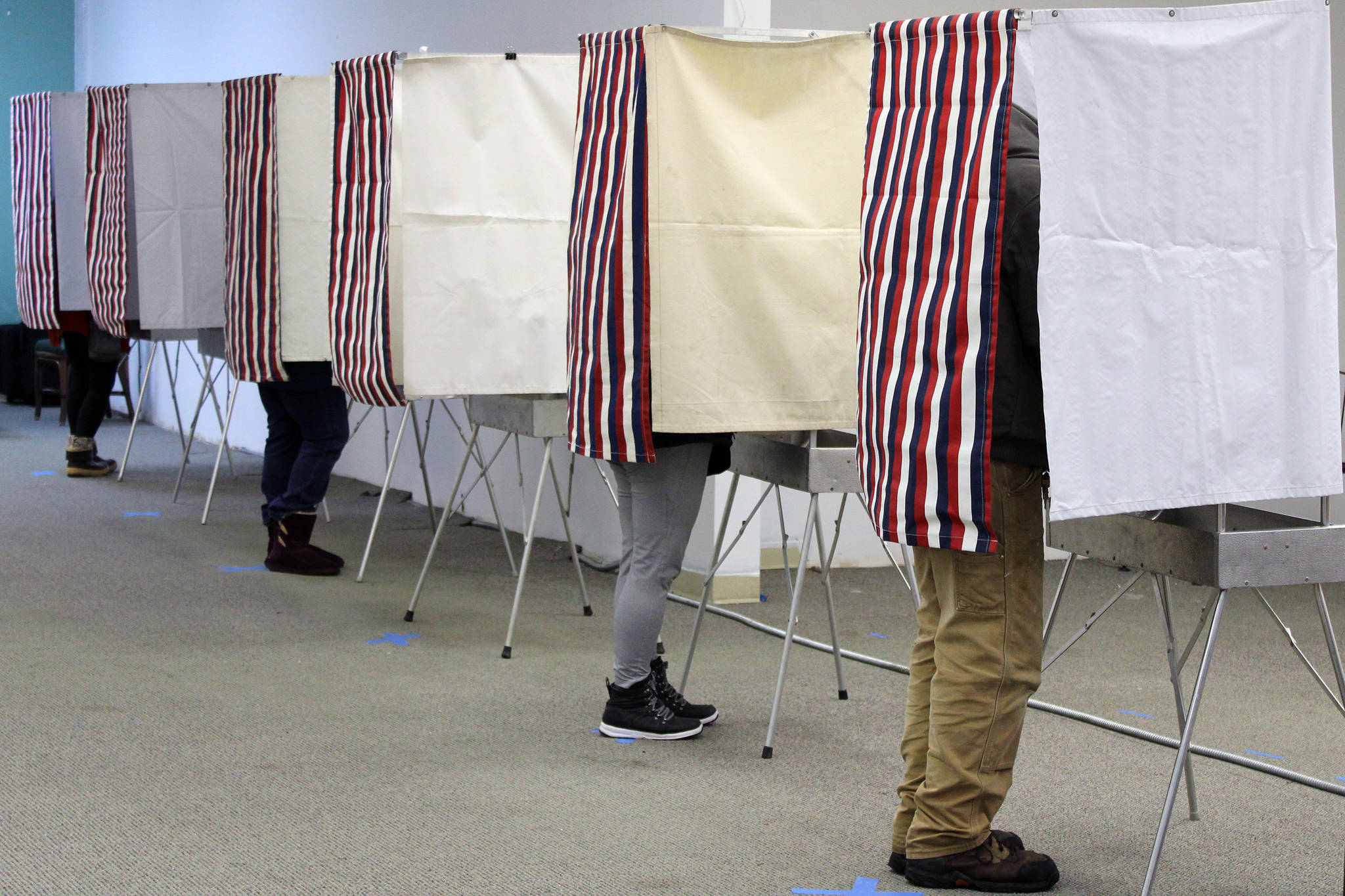By BECKY BOHRER
Associated Press
Alaska election officials plan to begin counting more than 155,000 absentee and other ballots Tuesday, a week after Election Day.
Some have questioned or criticized the lag, citing a provision of state law that says the counting of reviewed absentee ballots should begin the night of the election. But Maria Bahr, an Alaska Department of Law spokesperson, said absentee ballots are not deemed eligible for counting until voter histories have been run to guard against any possible duplicate votes.
The process involves going through precinct registers, which election officials were still receiving Monday, Division of Elections spokesperson Tiffany Montemayor said. She said it can take time for mail to arrive in the vast state.
“We’re using every resource that we can to get those things in as fast as we can,” she said.
Election officials urged patience ahead of the election, anticipating a large volume of absentee ballots and saying it would take time for results to be known. Some campaigns emphasized absentee and early voting amid the ongoing coronavirus pandemic.
Election Day, Nov. 3, was the deadline for ballots returned by mail to have been postmarked. This Friday, Nov. 13, is the deadline for the division to receive ballots that were postmarked within the U.S. Nov. 18 is the deadline to receive absentees postmarked outside the U.S.
About 190,000 ballots already have been counted, including Election Day and early in-person votes through Oct. 29, according to division statistics. The initial results showed the Republican incumbents in the races for president, U.S. Senate and U.S. House with largely similar tallies and sizable advantages.
In the Senate race, U.S. Sen. Dan Sullivan predicted a win, while his challenger, independent Al Gross, the Democratic nominee, has begun raising money “to make sure every vote is counted in this critical battleground race,” according to a tweet on his candidate page.
“As we’ve seen across the country and we’ve seen in Alaska, many people, especially our supporters, voted by mail,” Gross spokesperson Matt Lehner said. “We believe that there is a path and that a win is possible.”
Sullivan campaign manager Matt Shuckerow said based on analyses of available data, Gross has “no realistic path” to victory.
“I think a lot of Alaskans would like clarity; I know our campaign would like some clarity on this election,” Shuckerow said. “And we feel optimistic that on Tuesday … we will have a tally that clearly shows what we know: and that’s that Alaskans have proudly voted to re-elect Dan Sullivan.”
Meanwhile, the outcome of the state legislative races will help decide who controls the Alaska House and Senate. In Alaska, lawmakers don’t always organize according to party. Personalities and policy also can be factors.
Montemayor said the vote count could extend into Wednesday because of the number of ballots to process.

